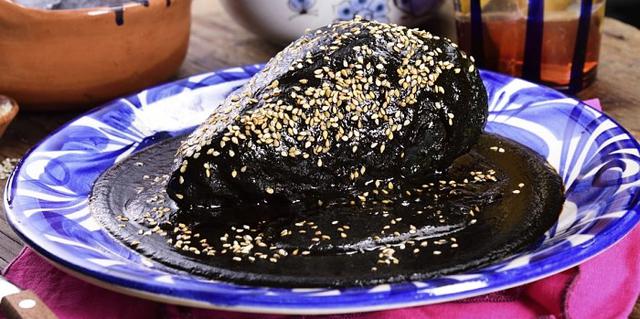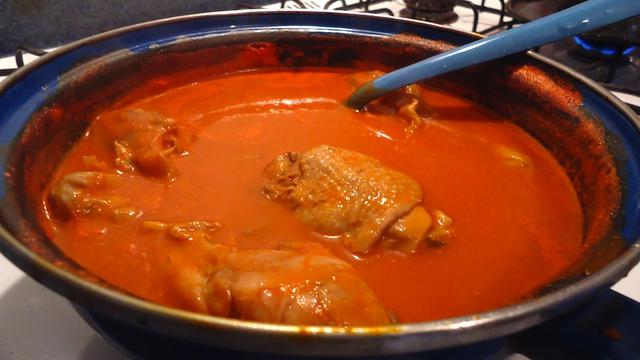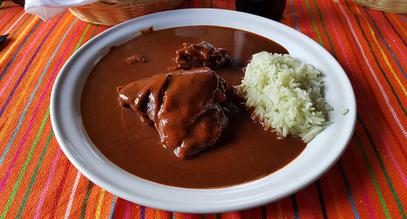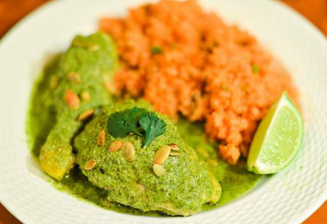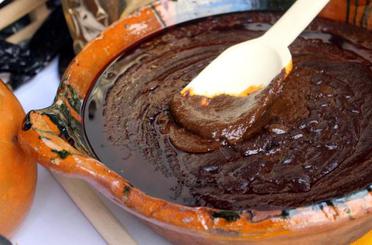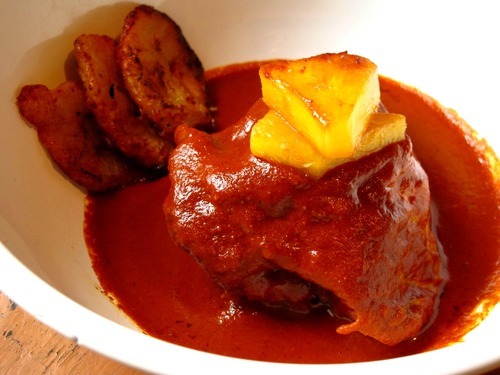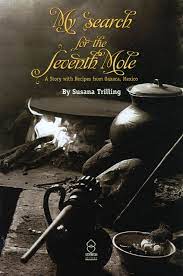1. Negro
The “typical” savory-sweet mole mentioned above, and the one most frequently found on American menus. An intricate recipe with a lot of ingredients and steps, you’ll be grinding and stewing the following together: onion, garlic, whole spices like cinnamon, cloves, black pepper and cumin, dried chiles, pumpkin and sesame seeds, herbs like hoja santo (which contributes to the dark color) and cilantro, bread for thickening and sometimes dried fruit for extra sweeteness. Oh, and plenty of dark, bitter chocolate.
2. Rojo
Red mole, also known as mole poblano, is similar to black mole, using many of the same spices and base ingredients and also contains chocolate, but less. Instead, this sweeter, spicier and more versatile version is amped up with several kinds of dried red chile like pasilla, guajillo and ancho as well as pulverized raisins and almonds or peanuts. When the sauce is done, browned chicken, pork or beef is typically added and stewed until tender, although I did seriously enjoy thick slices of queso oaxaca, a stretchy, soft mozzarella-like cheese, floating in mole rojo with fresh tortillas for breakfast.
3. Coloradito
This brew translates to “a shade of red,” or “on the naughty side,” depending on what you’re doing in the kitchen. Somewhere between rojo and negro in color, this brown mole shares the base ingredients of whole spices, onions, garlic, seeds and chocolate and features an awesome secret ingredient for thickening and sweetening: mashed ripe plantain.
4. Amarillo
Leave the chocolate at the door, this mole will have none of that. Picture all the goodness of the first three moles without the sweet stuff and you have a delicious basic sauce to pour over or use as a cooking base for myriad Mexican purposes. It’s not unlike a simple Indian curry sauce, the sky’s the limit.
5. Verde
White on the outside, green on the inside — that’s a pumpkin seed. Extra pepitas or pipian, along with fresh tomatillos, jalapenos and cilantro are the key ingredients in bright green mole verde. It can be diluted with chicken stock when it’s finished and poured over cooked chicken to make a soupy sauce mopped up with tortillas or bread.
6. Chichilo
This one’s a little more intense. Round up all the beef bones you can find, you’re going to need them. This dark, spicy sauce starts with rich, homemade beef stock. The stock rehydrates dried chiles de arbol, anchos and guajillos which you then blend with the usual slow-cooked garlic and onions. Mole chichilo is thickened with either masa harina, lime-cured corn flour, or crushed fresh tortillas. No chocolate here, either. Excellent for braises.
7. Manchamantel
This “tablecloth-staining” mole lives up to its reputation: between the bright red chorizo grease, tomatoes and ancho chiles, you do not want to get this stuff on anything white. Featuring fresh pineapple in addition to plantain, manchamantel is a sweet, spicy, fruity sauce any protein would be lucky to cook in.
Sound like enough moles for one region of Mexico? Just imagine how many variations there are — if every family in Oaxaca has their own version of each of the 7, how many moles are there really? Time to break out the calculadora graficadora.
For more information:
"My Search for the Seventh Mole"
by Susana Trillind
This book is set in San Lorenzo Cacaotepec, Etla during the Day of the Dead festival. Susana is looking for the seven moles of Oaxaca and visiting various people from the village trying to find them. This book has recipes for the seven moles and what to do with the leftover sauce- tamales or enchiladas, etc.
The 7 Moles of Oaxaca
